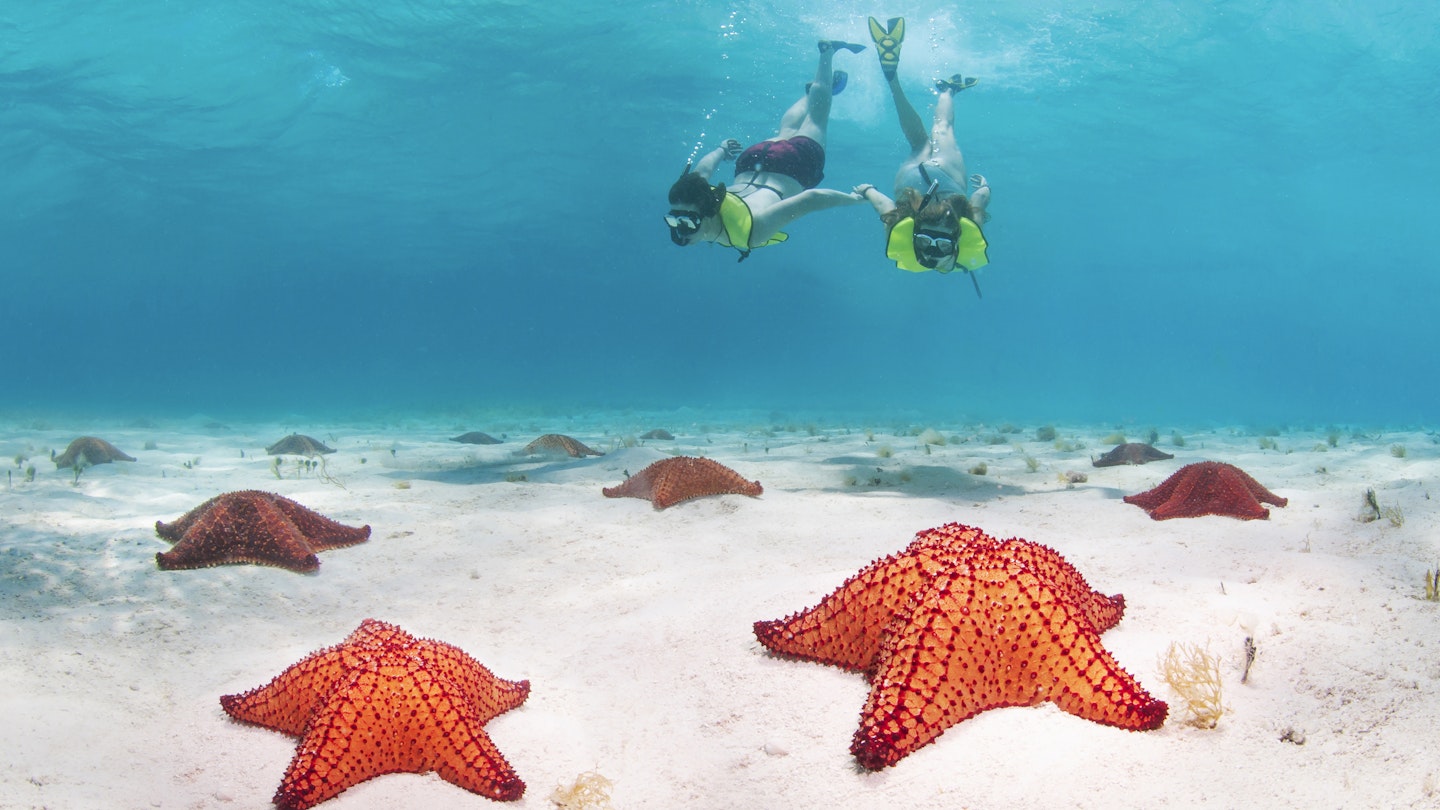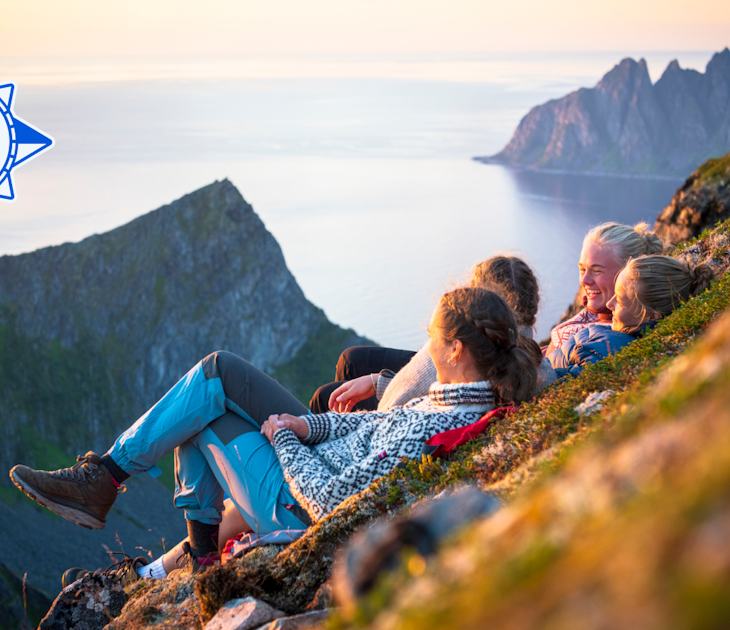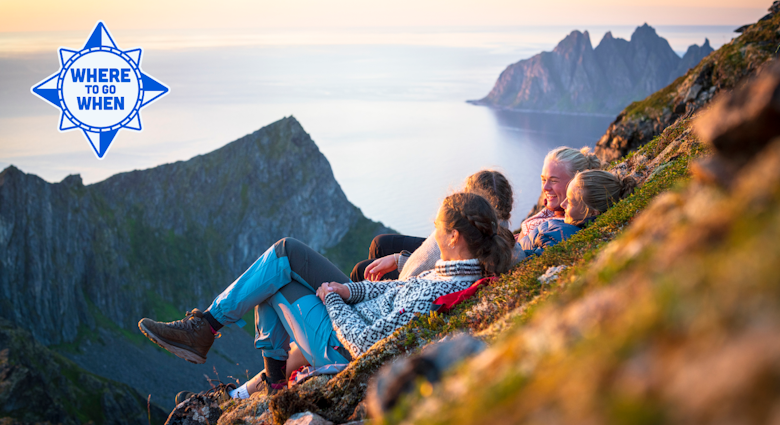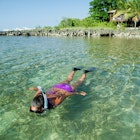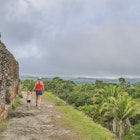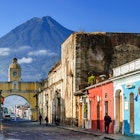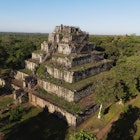Honduras has so much to see that the choices can feel overwhelming. You can hike through tropical rainforests, cloud forests and mountains, paddle around mangrove swamps, rivers and lakes, or visit Maya archaeological sites overflowing with ancient secrets.
Along the shore are beautiful beaches and reefs, and if you want that rum punch – or a shot of the local concoction, gifiti – it's easy to find a little merriment wherever you go. Here’s our guide to the best places to visit in Honduras.
1. Punta Gorda, Roatán
Best place to learn about Garifuna culture
Roatán may be touristy, but most of that scene is on the western part of the island. Head to the island's eastern municipality – Santos Guardiola – for a sense of what real Roatanian life is like. The Garifuna community of Punta Gorda is the oldest permanent settlement on the island.
The Garifuna people, of African and Indigenous Arawak descent, were exiled from the Caribbean island of St Vincent and established Garifuna communities in parts of Belize, Guatemala and Honduras. Garifuna culture has become integral to Honduras' national culture, from Afro-beats to machuca, a beloved coconut-milk-based seafood stew with a boiled ball of mashed plantains.
Garifuna culture is celebrated at the Garifuna Cultural Center in Punta Gorda, founded by Audrey Flores, a former New Yorker who came here seeking her roots. Though the center is closed as they expand the space, you can still learn about Garifuna history and culture on their website – construction should be wrapped up in 2024 to allow a grand reopening.
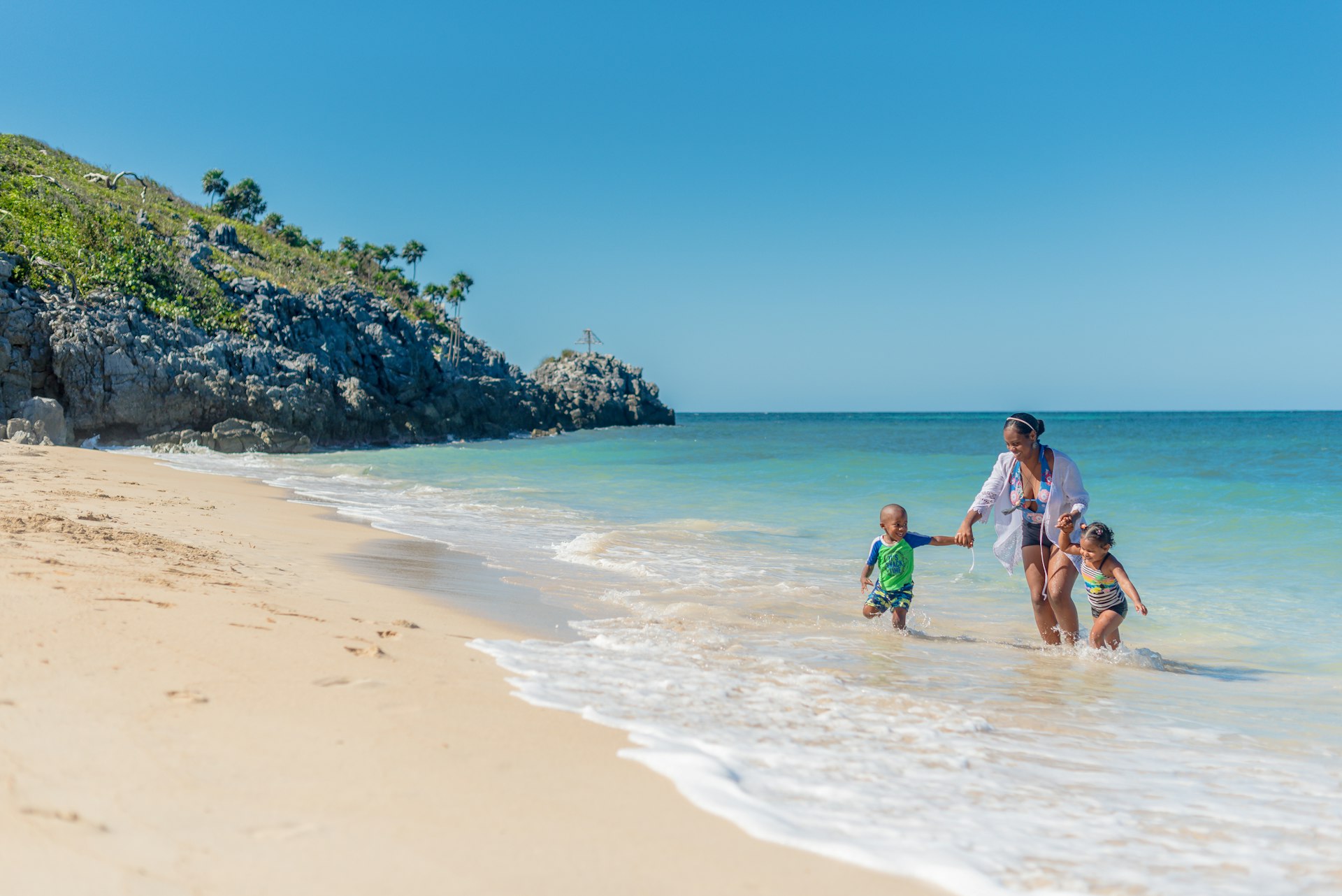
2. Eastern Roatán
Best place for peaceful beaches
While quieter than the west, eastern Roatán isn't completely devoid of resorts, and it has some fine beaches. Crowning a sand-flanked bluff, Paya Bay Resort, run by local islanders, is more like a spiritual retreat than a holiday resort.
Looking over the Caribbean Sea, it's quiet and secluded and offers an array of activities, from snorkeling and hiking to meditation and yoga. Day passes are available for non-guests, and the 22-acre private resort has the only clothing-optional beach on the island.
About a six-minute drive southwest is Camp Bay Beach, the go-to public beach in these parts. It’s a popular locale for family cookouts and sandy picnics. With natural white sands and wild coconut palm trees, Camp Bay represents what all of Roatán's beaches were like before resortification.
For the more active set, head to Jonesville, a town on the south shore, for a kayaking tour. Paddle your way through dense mangrove forests along the shore – there are even a few tunnels to paddle through. Keep an eye out for hidden treasure, as it’s rumored the carved-out tunnels were once hideouts for pirates.
3. Guanaja
Best place to escape the crowds
Of the three main Bay Islands, Guanaja is perhaps the most beautiful. The lack of development and less-convenient transport options have preserved a peaceful and natural landscape. Come here to immerse yourself in the lush, green scenery and hike the 4km trail (2.5 miles) for views from Michael’s Rock Peak. On the way, you'll pass the only waterfall on any of Honduras’ islands.
Some of the island’s most beautiful beaches are so secluded they’re only accessible by water taxi. Have a boatman take you to Soldado Beach, Graham’s Cay or Bayman Bay Beach if you want peace and quiet.
There are several low-key beach resorts, including Clearwater Paradise and the End of the World Resort – both focus on scuba diving. If you haven’t been certified yet, this would be the place to do it, with access to some of the best dive sites nationwide.
The stillness of Guanaja may soon be a thing of the past, however, thanks to the new ferry service from Roatán, which began in October 2021 and runs four times a week. There are also domestic flights and charter boats coming into the island.
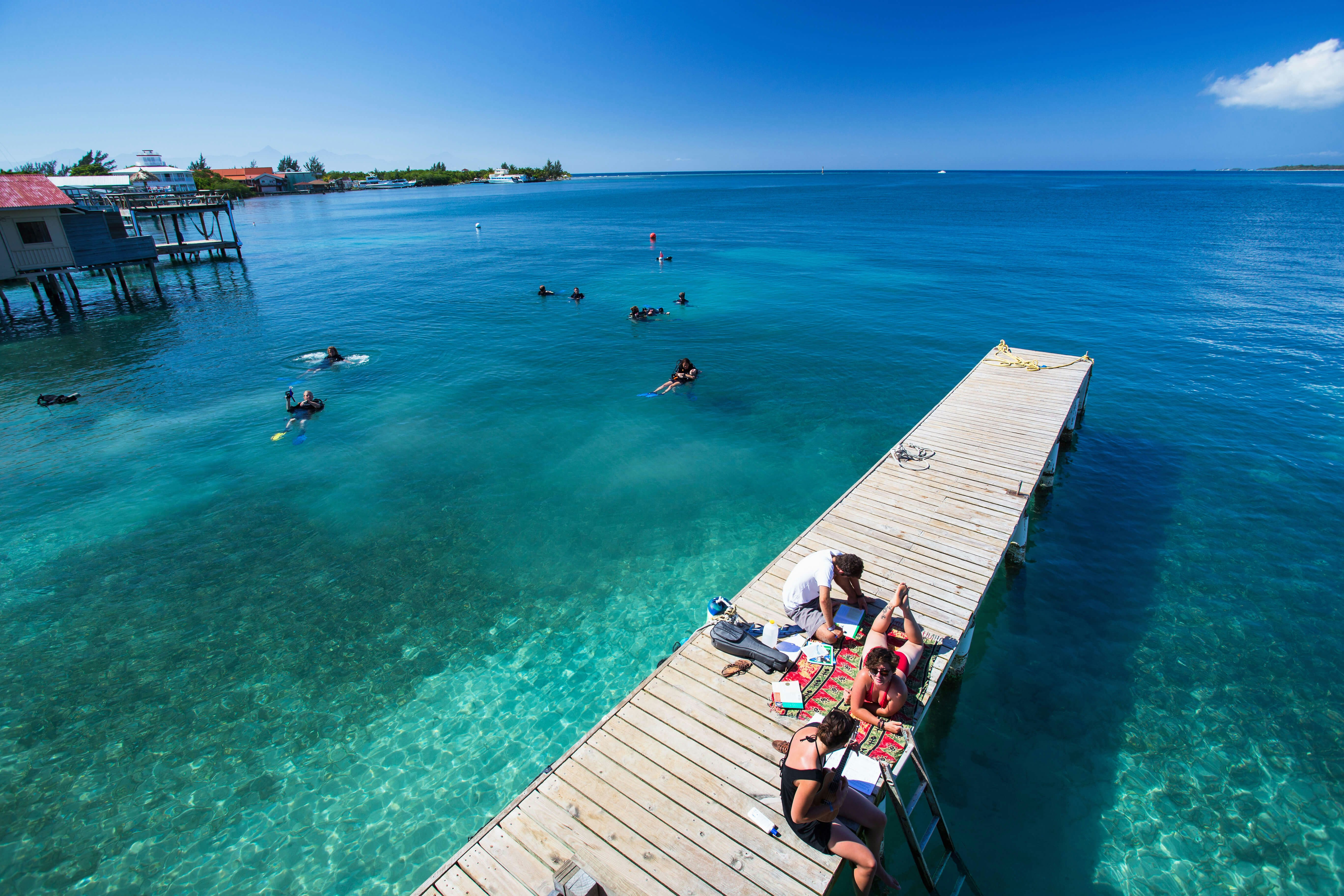
4. Utila
Best place to party
Unlike Roatán, favored by an older set who were backpackers a generation ago, Utila is still a Neverland for young partygoers who come to scuba dive, drink, free dive, sing karaoke, enjoy the beach, and do it all over again the next day.
There are many stories of visitors who intended to stay just a few weeks and ended up staying for years. Some 150 expats have made Utila their home, away from the action, and despite the regular nighttime revelry in town, there’s still an overall relaxed island vibe that welcomes everyone.
There's only one main strip in the island's one small town and it's lined with colorfully painted bars, shops, restaurants and hotels. Ask any seasoned traveler where the party’s at on any particular night, be it a live music show at Bando Beach or karaoke night at La Cueva. Not every place has a loud party atmosphere – as well as hostels (La Hamaca is a favorite), there are also quieter boutique hotel options such as Manurii and the Sea Eye Hotel.
Utila has also moved beyond its past of cheap backpacker pizzas and fried food. The island has become something of a foodie destination, with elevated seafood places such as Captain Willis Bistro and Asian fusion joint Mister Buddha (their “bananero roll” – an inside-out maki roll topped with slices of plantains – is especially tasty).
5. Cayos Cochinos
Best place for a day trip
Cayos Cochinos is a small archipelago of Honduran islands close to the mainland near La Ceiba, comprised of two main islands, Cayo Grande and Cayo Menor, plus 13 smaller coral keys. Some have simple Airbnbs, some are privately owned, and some are devoid of anything but white sand beaches. The largest island, Cayo Grande, is roomy enough to hold a few accommodations, including Vitos Eco Diving Resort and Cabañas Laru Beya.
One common way to visit Cayos Cochinos is a day tour from La Ceiba or Roatán. A boat will carry you to the best spots for laying out on the beach or snorkeling. Marine life flourishes under the protection of organizations such as the Coral Reef Alliance, and it’s not unheard of to spot a nurse shark or eagle ray.
Some tours provide lunch, but if you land on Cayo Chachahuate, you can buy food from the local Garifuna community – the catch of the day from local fishers will be fresher than anything that’s been sitting in a boat’s cooler all day.
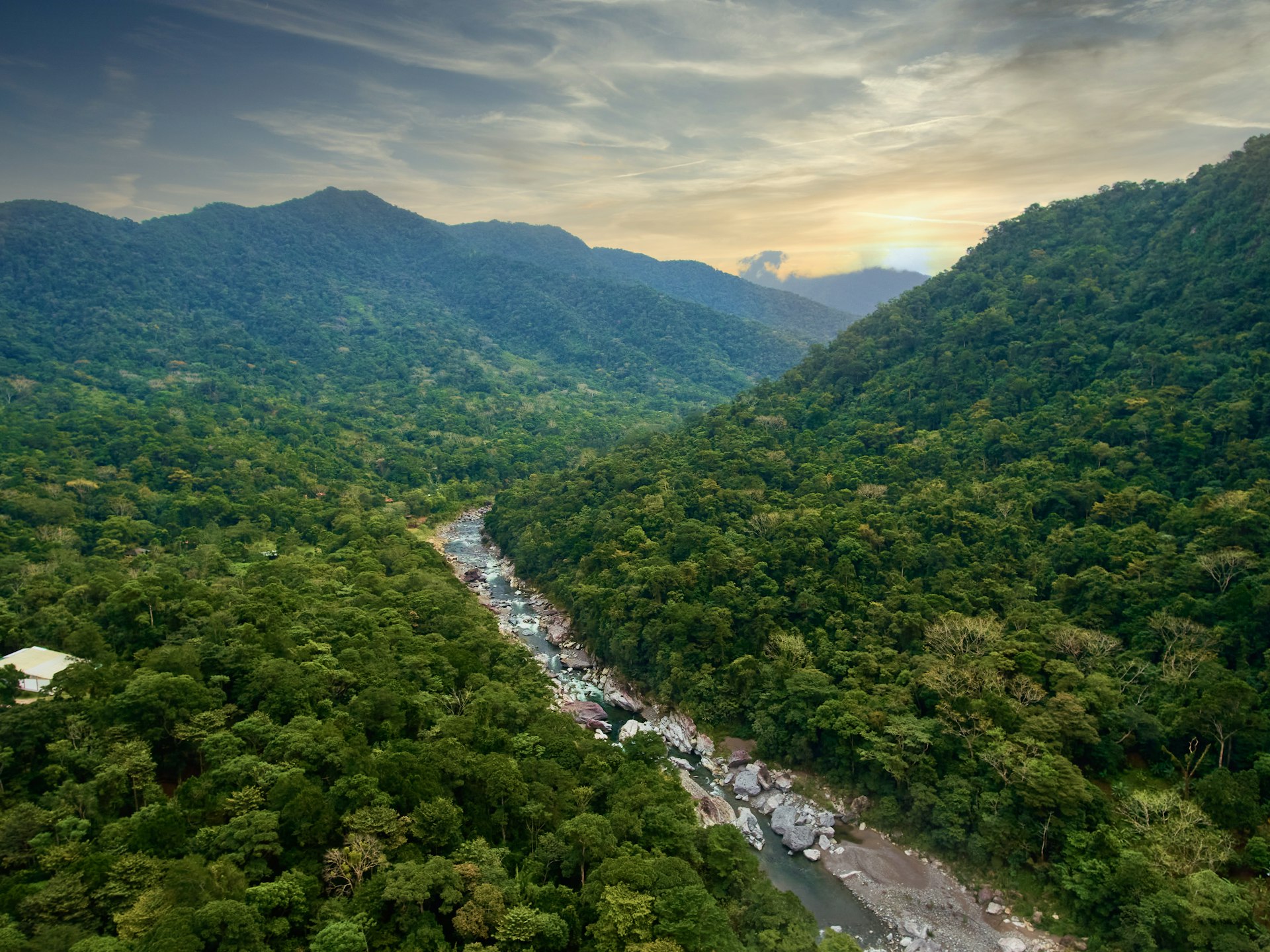
6. Pico Bonito National Park
Best place to get close to wildlife
La Ceiba, located on the northern coast, was once the epicenter of the banana industry. It's believed to be the spot where hungry workers inadvertently invented baleada, Honduras' unofficial national dish, comprised of beans, cheese, sour cream, curtido (cabbage relish), and meat or eggs folded inside a grilled tortilla.
Nowadays, La Ceiba is best known as the gateway city to Honduras’ premier showcase of biodiversity – Pico Bonito National Park. Named after the triangular-shaped peak at its heart, Pico Bonito is home to toucans, jaguars and monkeys, alongside many other animals. Book a guide to take on the challenging three-hour hike to see the stunning Cascada Zacate (you’ll hear the falls long before you see them).
Bordering Pico Bonito, Rio Cangrejal is La Ceiba’s playground for river sports such as whitewater rafting and kayaking – El Naranjo is a great place to base yourself, with accommodations ranging from tasteful B&B La Villa Soledad, to eco-adventure-focused Omega Lodge.
7. Tela
Best place for exploring the Parque Nacional Jeannette Kawas
Tela, on the northwest Caribbean coast, is one of the more appealing beach cities on the mainland. Like La Ceiba, the town has a banana-growing past, but today, it's popular for its seaside resorts and cuisine. If you’ve grown tired of fried fish, try the sopa de caracol (snail soup), a dish so iconic that there’s a popular song about it.
As well as housing an excellent aquarium, the Tela Marine Research Center is an important research facility for Stony Coral Tissue Loss Disease, an infection that’s killing coral across the Caribbean. There are several white-sand beaches along the shores of Tela Bay, including the public beach in town, but the best beaches are half an hour away in Parque Nacional Jeannette Kawas, Honduras' largest national park.
Snakes, monkeys and jaguars lurk in the rainforest and the park also boasts beach coves, mangrove forests and the country’s largest saltwater lagoon. Access is by boat, so book a tour with a Tela-based company such as Garifuna Tours to experience it.
If you need a break from the beach, Tela is also near one of the largest botanical gardens in all of Latin America – Lancetilla Jardín Botánico. The park spans 1680 hectares (4151 acres) and features an impressive tunnel of towering bamboo alongside numerous tropical species.

8. Copán
Best place to learn about Maya culture
Touring the well-preserved Copán Archaeological Site Ruins is the main reason to visit the western part of the country. The site was the home of one of the most important Maya civilizations and is filled with artifacts built between 250–900 CE. And the best part? Most days, you’ll have the ruins virtually to yourself.
But there’s a lot more to experience in Copán when you’re done playing Indiana Jones. While the sun’s out, so are the sunflowers, so grab your camera and head to El Paseo de los Girasoles (The Path of the Sunflowers). A working farm growing sunflowers as feed for dairy cows, the Hacienda El Amatal has inadvertently become an Instagram hotspot.
It may be confusing, but the town surrounding the Copán Ruins is actually named Copán Ruinas – it's a charming little town that serves as the perfect base while exploring the area. Accommodations range from the long-running Iguana Azul hostel to the newer, four-star Hotel Marina Copán. After all your daytime excursions, relax for tea time at El Lugar del Té y Chocolate.
For the best sunsets in town, take a taxi up the hill to Hacienda San Lucas, a farmhouse-turned-hotel and restaurant with an awesome view of the sunset over the Rio Copán. The signature cocktail here is named after the national bird, the scarlet macaw, which you can see up close at the Macaw Mountain Bird Park and Nature Reserve, just 10 minutes from the Copán ruins.
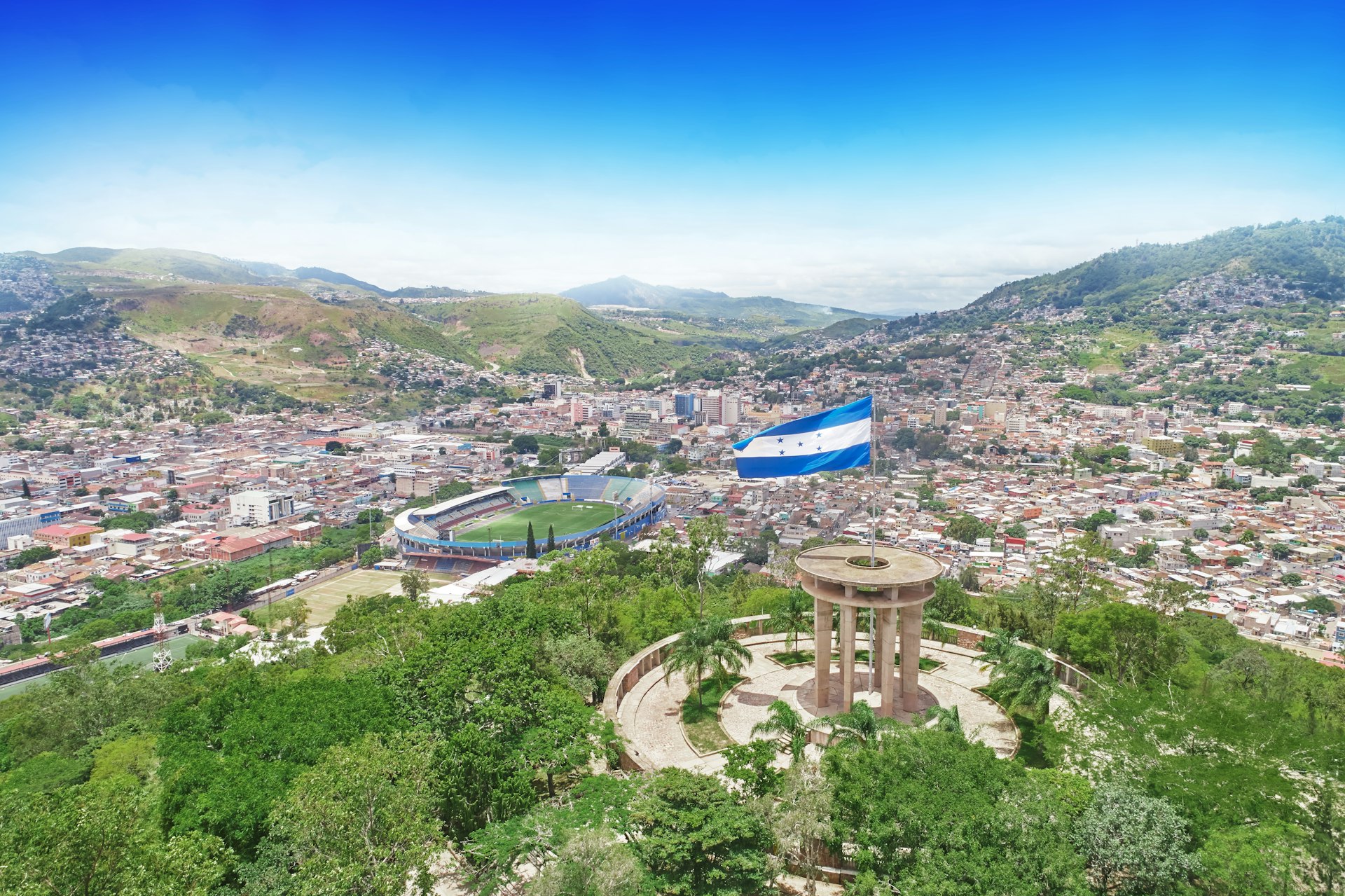
9. Tegucigalpa
Best place for museums and culture
It doesn’t matter if you can’t pronounce the name of Honduras’ capital city, locals merely refer to it as “Tegus” (te-goose). Don’t let stories of crime keep you from coming here; as long as you’re street-smart, Tegucigalpa can be as safe as any major city.
Most city sights are in El Centro, in and around the Plaza Morazán, named after the former president. Here, you’ll see the 18th-century main cathedral and the Centro de la Cultura Garinagu, which highlights Garifuna culture.
A few blocks away, you can explore Honduras' national identity at the Museo para la Identidad Nacional, which offers guided tours in English.
For a breather from the hustle and bustle, head to Parque Naciones Unidas El Picacho in the northern part of the city. Here, a trail leads to the Picacho Christ, a smaller, 20m (66ft) rendition of Rio de Janiero’s Christ the Redeemer statue.
You can also take a day trip from Tegus to Parque Nacional La Tigra, the closest national park to the capital, which features cloud forests, rivers and waterfalls. Or head to Valle de Ángeles, a 16th-century mining town with restored buildings that now house woodworking artisans.

10. Lake Yojoa region
Best place for bird-watching and hiking
Lago Yojoa, Honduras’ largest lake, is another locals’ getaway in the middle of the countryside, about four hours from Tegucigalpa. Lakeshore restaurants serve up fried fish with the typical sides of rice, beans, curtido and plantains.
Like craft beer as much as you like lakeside activities? Just base yourself at D&D Brewery, a local microbrewery, lodge and adventure company. They can arrange all sorts of excursions on or around the lake and feed you when you’re done.
Lake Yojoa actually lies in between two national parks, Parque Nacional Montaña de Santa Bárbara, centered on 2744m (90,003ft) Montaña de Santa Bárbara, and Parque Nacional Cerro Azul Mèambar (aka PaNaCAM). Both are famous for their hiking and birdwatching opportunities.
Quetzals are the prized birds to find in these parts – they were sacred to the Maya – but if you’re not so enthusiastic about being glued to binoculars, there are many other forest creatures to keep you from getting bored as you hike to the parks’ many waterfalls.

